Arromanches and Port Winston Churchill-A Quick Visit
One of the most vivid memories I have of my first visit to Europe and the D-Day sites in Normandy over fifty years ago was the artificial harbour constructed at Arromanches on the Gold Beach sector of the Allied landings on D-Day. Despite visiting some nineteen years after the event the harbour was choked with partially sunken ships, cement barriers, collapsed bridges and other detritus that had once comprised Port Winston, an entirely artificial harbour created to facilitate the landing of men and material after the D-Day beaches were secured. An incredible 2.5 million men were landed here along with over 500,000 vehicles.
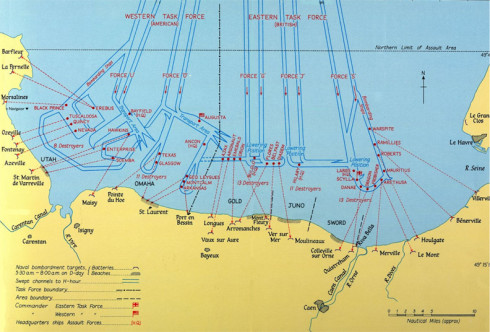
Imagine my surprise on returning with Liberation Tour 2015 to find it largely unchanged. Yes a lot of the debris was removed, but as you can see a lot remains and presumably will until nature takes its course.
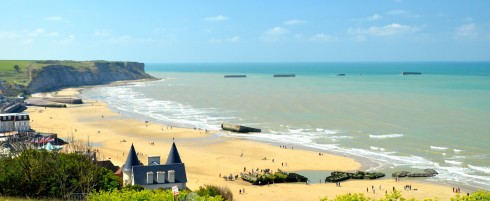
One of the reasons I consider Winston Churchill the greatest politician of the 20th century was his ability to think not only in the largest possible terms geopolitically, but also in the most minute. It was Churchill who realized after the disastrous raid on Dieppe that if the Allies could not capture an existing port at which to disembark the troops and material to win the war, that they would need to build one. The only problem was that nobody had ever done this before and it needed to be done in a very short period of time. Churchill put on his thinking cap, rounded up the best engineering brains available and the concept became a reality. Code named Mulberry there were actually two artificial harbours built after D-Day, but the one at Omaha Beach was destroyed by a storm leaving only the one at Arromanches to offload virtually everything needed to conduct the ground war.
Arromanches and Port Winston
The history of the Mulberry harbour at Arromanches was explained by Liberation Tour 2015 historian Phil Craig from a high bluff from which we could see the entire beach and town. We then descended into Arromanches and learned more at the Arromanches D-Day Museum. After the museum Alison and I strolled on the beach and mixed with the many other tourists, most of whom were not here because of the war, but because Arromanches is a very mice place to visit.
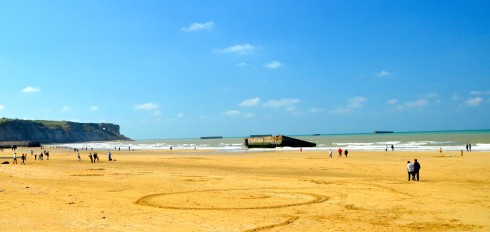
We then spent some time in Arromanches and I came across two signs that I couldn’t resist photographing. Here is the first.
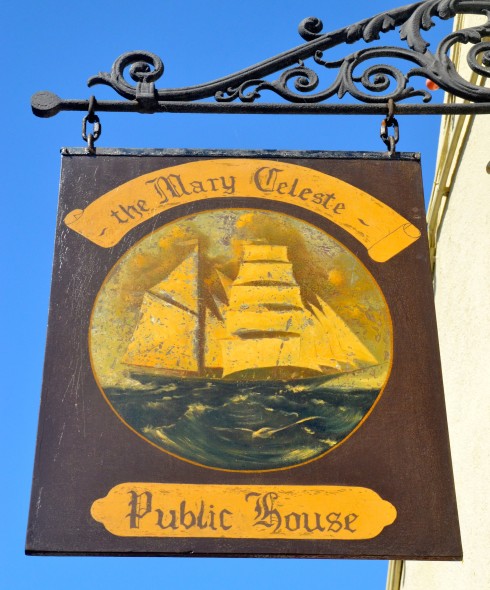
The Mary Celeste was built in Spencer’s Island, Nova Scotia and became, perhaps the greatest maritime mystery in history, when she was discovered afloat off the Azores in 1872 with all of her crew gone, never to be seen again. I could not find any explanation as to why this pub in Arromanches would be named after her. A few years after I wrote this post we visited the court house in Gibraltar where the enquiry into the Mary Celeste mystery was held.
Here is the second sign.
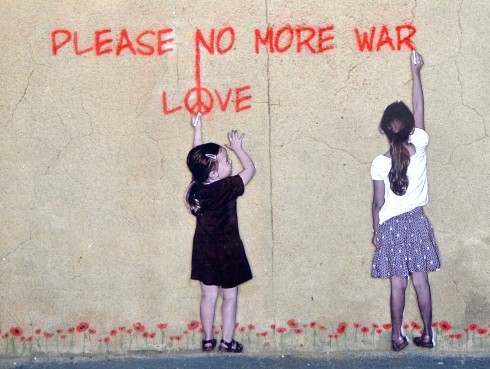
This is one of the most tender signs I’ve ever seen and I can only wish. So long from Arromanches. Next we will take some time off to visit the Bayeaux Tapestry. Please join us in viewing this paean to William the Conqueror.

